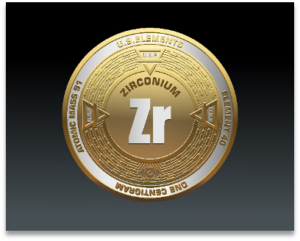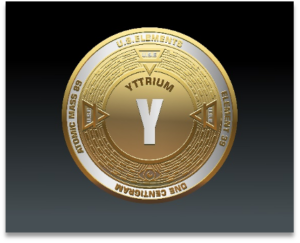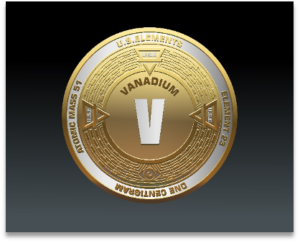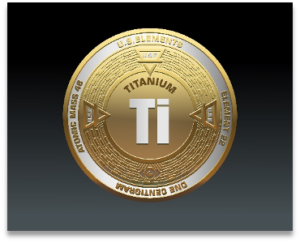While many critical minerals gain recognition for their applications in defense, energy, and industry, ytterbium remains one of the lesser-known yet essential elements in modern technology. Named after the Swedish village of Ytterby, where it was first discovered, ytterbium plays a crucial role in precision instrumentation, fiber optic communication, and even nuclear medicine. As we reach the fifty-second installment in our Critical Minerals Series, it is time to explore why ytterbium is indispensable and how securing its supply is vital for the future of American industry and security.
Why the U.S. Needs Ytterbium
Ytterbium is a rare earth element with remarkable properties that make it invaluable across various high-tech applications:
- Fiber Optic Technology: Ytterbium-doped fiber amplifiers are crucial in long-distance optical communication systems, improving signal strength without converting light into electricity.
- Medical Imaging & Lasers: It is a key component in certain medical imaging devices and high-powered lasers used in surgical procedures.
- Nuclear Reactors & Radiation Sources: Ytterbium isotopes contribute to nuclear medicine applications, particularly in radiation therapy and industrial gamma-ray sources.
- Alloy Strengthening: When added to stainless steel, ytterbium enhances its mechanical properties, making it more durable and resistant to corrosion.
Where It’s Found Domestically
Although ytterbium is a rare earth element, it is commonly found in minerals such as xenotime and monazite, which contain mixed rare earth oxides. The United States has some known rare earth deposits in states such as California, Wyoming, and Texas. However, ytterbium is typically extracted as a byproduct of rare earth mining operations, rather than through targeted extraction.
Economic Realities
The global ytterbium market is relatively small compared to other rare earth elements, but its high demand in niche applications makes it a valuable commodity. China dominates the rare earth supply chain, producing over 70% of the world’s rare earth elements, including ytterbium. This dependence presents a risk for the U.S., particularly in defense and telecommunications sectors reliant on ytterbium-based technologies.
Processing and Technological Innovations
Extracting and refining ytterbium is challenging due to its presence in mixed rare earth minerals. The U.S. is investing in new separation technologies, including solvent extraction and ion-exchange techniques, to develop a more sustainable domestic supply chain. Research in advanced material recovery techniques is also gaining traction, allowing for ytterbium recovery from industrial waste and electronic scrap.
Abundance and Waste Recovery Potential
Ytterbium is relatively rare in the Earth’s crust, occurring at about 3 parts per million. Its economic recovery primarily depends on existing rare earth mining operations. Innovative recycling methods are being explored to extract ytterbium from discarded electronics and spent catalysts, reducing the need for primary extraction.
Time to Market
Due to its dependence on rare earth extraction processes, ytterbium takes a considerable amount of time to reach end-users. Developing new domestic refining capabilities could streamline the supply chain and reduce reliance on foreign sources.
Current and Future Applications
Beyond its established uses, ytterbium is being explored for new and emerging technologies, including:
- Quantum Computing: Ytterbium ions are being studied for their potential role in quantum computing, offering stable qubit states for advanced computational systems.
- Advanced Battery Technologies: Research is underway to utilize ytterbium compounds in next-generation energy storage solutions.
Impact on Everyday Life
Ytterbium’s role may be subtle, but its impact is widespread. From enabling high-speed internet connections to enhancing the durability of medical and industrial equipment, this element is deeply embedded in modern infrastructure.
Consequences of Supply Shortages
A disruption in ytterbium supply could affect multiple industries, including telecommunications, healthcare, and defense. Without a secure source, the U.S. risks falling behind in technological advancements and national security applications that rely on ytterbium-enhanced materials.
Import Dependence
Currently, the U.S. imports most of its ytterbium through global rare earth supply chains, primarily from China. This reliance underscores the urgency of establishing a domestic rare earth processing industry.
Securing America’s Ytterbium Supply
Investing in rare earth mining, improving separation technologies, and expanding recycling initiatives will be critical to securing a sustainable supply of ytterbium. The U.S. must take proactive steps to develop a self-sufficient supply chain and reduce dependence on foreign sources.
Final Thoughts
As we conclude this fifty-second article in our Critical Minerals Series, ytterbium stands as a testament to the unseen forces driving modern innovation. While it may not be a household name, its contributions to fiber optics, medical advancements, and emerging technologies make it a mineral of the future. By prioritizing domestic production and innovative recycling, the U.S. can ensure a resilient and independent supply of ytterbium, strengthening the foundation of its high-tech industries.
The journey to securing America’s critical minerals continues. Stay tuned as we explore more elements shaping the future of industry, defense, and technology.







